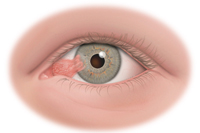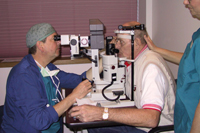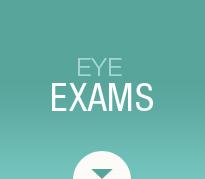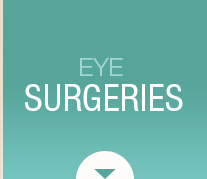Eye Surgeries
Pterygium
 Pterygium is a benign growth of the conjunctiva (lining of the white part of the eye) that grows into the cornea, which covers the iris (colored part of the eye). A pterygium usually begins at the nasal side of the eye. It can be different colors, including red, pink, white, yellow, or gray.
Pterygium is a benign growth of the conjunctiva (lining of the white part of the eye) that grows into the cornea, which covers the iris (colored part of the eye). A pterygium usually begins at the nasal side of the eye. It can be different colors, including red, pink, white, yellow, or gray.
Patients with pterygium often first notice the condition because of the appearance of a lesion on their eye or because of dry, itchy irritation, tearing or redness. Pterygium is usually first noticed when it is confined only to the conjunctiva. At this stage it is called a pingueculum. Once it extends to the cornea it is termed a pterygium and can eventually lead to impaired vision.
Causes
Although the causes of pterygium are not entirely known, it is believed to be caused mainly by exposure to UV light. Another suspected risk is living in a dry, dusty, windy environment. People who live near the equator or play water sports such as surfing and fishing are thus more likely to develop pterygium. Prolonged exposure to these conditions causes the conjunctiva to thicken and the eye to become red and irritated. Collagen in the eye begins to deteriorate, and the eye weakens.
Studies show that there may also be a genetic predisposition to pterygium, with a higher prevalence in men than in women.
Signs and Symptoms
 Symptoms of pterygium include dryness, redness, irritation, inflammation, and tearing. In more severe cases, the pterygium may grow over the pupil and limit vision.
Symptoms of pterygium include dryness, redness, irritation, inflammation, and tearing. In more severe cases, the pterygium may grow over the pupil and limit vision.
Prevention
Sunglasses that block UV rays, particularly sunglasses that provide side coverage, are a good means of protection against pterygium. Wearing a hat with a brim to block sunlight is also helpful. In hot, dry climates, artificial tears (eye drops) should be used to help lubricate the eyes.
Treatment
In most mild cases of pterygium, artificial tears can be used to reduce dryness and irritation.
For patients with severe cases whose vision has been affected, different types of surgery are available. Surgery is the only way to definitively remove a pterygium, but it is not a perfect solution; it requires long-term follow-up, and there is a risk that the pterygium will grow back.
- Conjunctival auto-grafting is a safe and effective technique that surgically removes a pterygium. In this procedure, the pterygium is removed along with the tissue covering the sclera (conjunctiva). Tissue is removed from the inside of the patient's upper eyelid and replaces the bare sclera.
- Amniotic membrane transplantation is another safe and effective pterygium removal procedure. Tissue is removed from the inner layer of the placenta and used to reconstruct the surface of the eye. This type of graft encourages healing and reduces swelling.
If the pterygium persists after surgery, or to minimize the risk of the pterygium recurring, a radiation treatment called strontium plaque therapy may be recommended. Radioactive strontium produces beta particles that penetrate the cornea and prevent the regrowth of blood vessels that occur as the pterygium returns.
SLT for Glaucoma
Selective Laser Trabeculoplasty (SLT) is an advanced treatment option for glaucoma patients that lowers eye pressure and increases fluid drainage. This procedure offers a simple solution to glaucoma symptoms through a minimally invasive procedure with no side effects, scarring or pain.
The SLT procedure is effective for almost all patients with just one session. It has been performed successfully in Europe for the past 10 years and is now FDA approved for use in the US. It is performed in the office and takes just a few minutes, providing long-term results through the use of a low-energy laser beam.
SLT is most effective for patients unable to keep up with a daily eye drop treatment because of its cost, inconvenience or side effects. SLT controls glaucoma symptoms for up to 5 years with no need for additional medication, and relieves symptoms by promoting the body's natural healing response. There are no major risks or complications associated with SLT and the procedure is covered by most insurance companies.
![]() For more information on Eye Surgeries or to schedule an appointment, please call 520.458.8131.
For more information on Eye Surgeries or to schedule an appointment, please call 520.458.8131.




